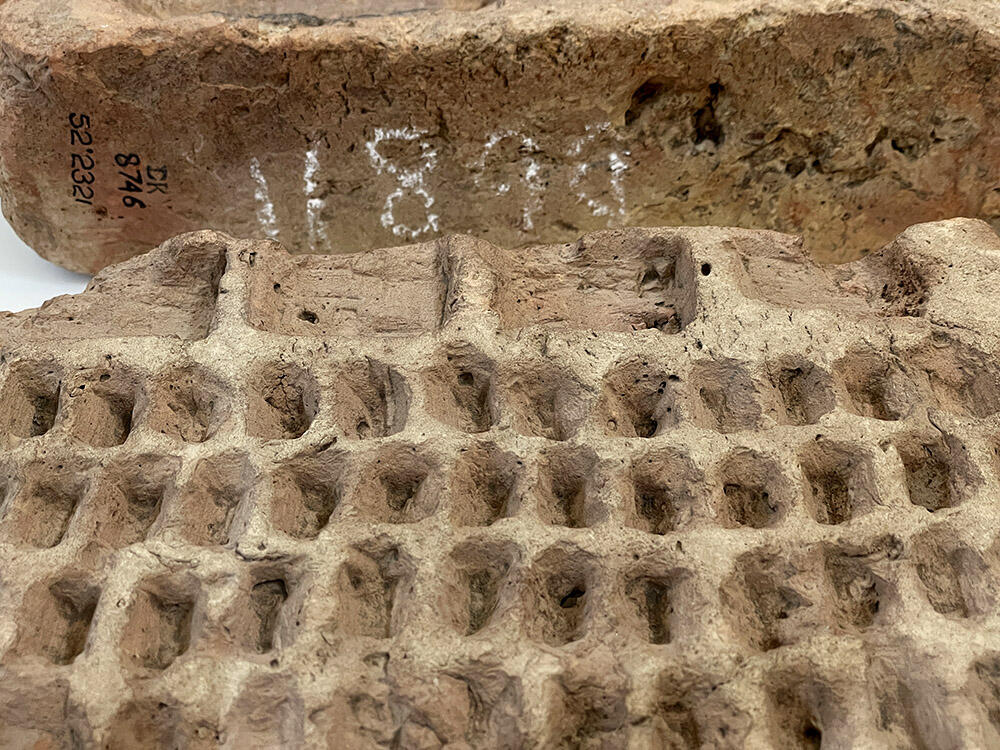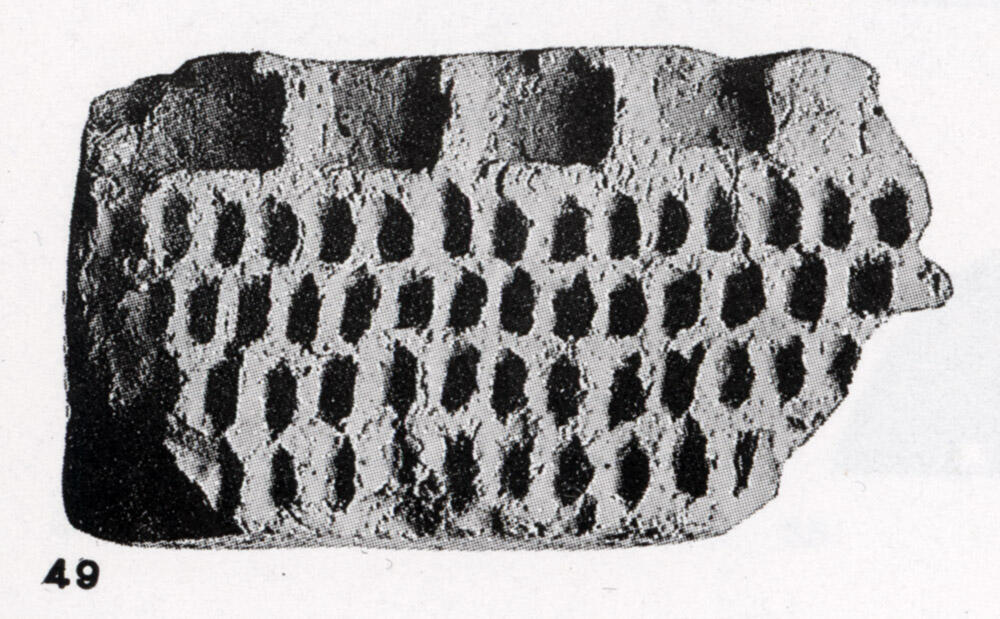Ernest J.H. Mackay identified this piece as a gameboard, and wrote in Further Excavations (p. 574-5):
"We have been fortunate in finding two boards on which same kind of game was played, though unluckily neither is complete. It is ikely that most of the gameboards of Mohenjo-daro were made of wood and have therefore perished. That wooden boards were used in Sumer is now well-known from Woolley's discoveries at Ur [footnote: The Royal Cemetery, pls. 95-7. Antiquity, Dec., 1930, p. 425]. and they were elaborately inlaid with shell and other materials. We have, however, not yet found at Mohenjo-daro any inlay that can be definitely associated with gameboards, and if the latter were inlaid, it may have been with substances that perished with the wood [footnote: There is a possibility that the fretted, round pieces of inlay (Pls. CVII, 14; CXLI, 9, 10) may have marked a special place on a gameboard, like the rosettes that were used for this purpose in Sumer and Greece].
"No. 49 in Pl. CVI (DK 11141 [above 1,2]). Brick. Now measures 10•7×5•83×2•68 ins. A portion of one end is missing, but the brick i s hardly likely t o have been much longer. On one of the faces four rows of shallow depressions, averaging 0-58 in. long by 0•4 in. wide by 0•3 in. deep, had been roughly scooped out; and along one side was a row of four, perhaps originally five, square holes, also roughly cut and somewhat unequal in depth. I t is impossible to tell how many holes this board once had; there are now fifteen in the best preserved row. All the holes are slightly worn by the picking up and replacing of the gamesmen, and none are marked in any way to distinguish them from one another.
"The pieces used with this board were probably seeds of some kind, and judging from the number of pools, certainly four and perhaps five [footnote: On the other hand, the fifth compartment may have been used for special forfeits, in which case the game would have been played by four or less players], it would have been possible for one of these two numbers of players to take part in the game. The nearest approach to this board, of which I know, is one of uncertain date from Memphis in Egypt, which had three rows of fourteen holes with a pool at one side [footnote: Petrie, Objects of Daily Use, p. 55, pl. XLVII, 175]. On this latter board also, the holes for the men were only roughly scooped out and it has been suggested that beans or small pieces of pottery were used.
"This game may have been very similar to one now played in Uganda, where the gameboards have four rows of eight holes each [footnote: Braunholtz, Man, July, 1931, sect. 131]. In this African game however, there are only two players, each of whom uses two adjacent rows of holes for his pieces. The four or five pools at the side of the board at Mohenjo-daro seem definitely to indicate more than two players.' Locus: Bl. 21, ho. II, rm. 4 Level: - 5•7 ft."




